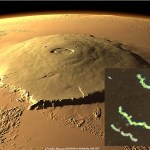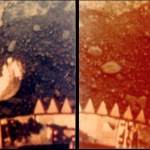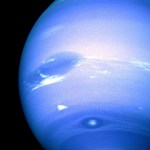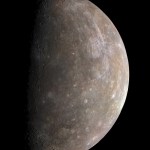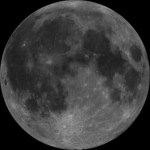Planetary Science
Check out our detailed interview with the famous and amazing Ethan Siegel.
We talk about the history of understanding the universe, why you should believe in Dark Matter even though it is obviously fake, why exploring uranus can lead to the discovery of amazing things, and more.
Manot Cave cranium
With a skull and Keats, there was little choice but to write about the new online items in rhyme. So with apologies to Shakespeare, Keats and the scientists, as well as the people at SpaceIL, here are today's grab bag of poems. As usual, follow the links.
On a Lone Cranium
Alas poor Yorick – We can only know
Where you lived all those eons ago
Walking, did you take those others in stride;
Human, yet strange, as they strode alongside?
Did your children wander forth,
Searching for a greener North?
Can your skull, a bit of bone,
Tell us where our seeds…
The ‘Nifty Fifty (times 4)’, a program of Science Spark, presented by InfoComm International, are a group of 200 noted science and engineering professionals who will fan out across the Washington, D.C. area in the 2014-2015 school year to speak about their work and careers at various middle and high schools.
Meet Nifty Fifty Speaker Dr. Erica Ellingson
Her research is key to shedding further light on how the cosmos began and its future development.
"My work focuses mostly on topics concerning the evolution of galaxies and quasars, and observational cosmology-- the origin,…
Speaking of sulfur: This common element turns out to be highly useful for understanding planetary processes – both on Earth and Mars. Two new papers by Dr. Itay Halevy use sulfur chemistry to understand the history of sulfur-loving microbes at the bottom of the ocean and the compounds spewed from Martian volcanoes that may have created brief Martian “springs.”
Sources of sulfur: Olympus Mons on Mars and sulfate-reducing bacteria that live in water on Earth (inset)
On the ocean beds, microorganisms “breathe” sulfur: They take in sulfate – an abundant compound of oxidized sulfur, and use it…
"There is no dark side of the moon really.
Matter of fact it's all dark."
While the Moon has a nearside and a farside, it does not, actually, have a dark side or a light side, now. At least not a fixed dark side, just a slowly moving night side, and day side.
But it used to. Sorta.
"I remember the first time I saw a globe of the moon as a boy, being struck by how different the farside looks," said Jason Wright, assistant professor of astrophysics. "It was all mountains and craters. Where were the maria? It turns out it's been a mystery since the fifties."
Jason, Arpita Roy a Penn State grad…
"A Hard Rain's A-Gonna Fall on the Dark Side of the Moon..."
The Astrowright has been doing some lunatic slow blogging on an interesting problem:
The Nearside of the Moon
from Ron Hodges - NASA medialibrary
The Farside
from apod
One of these is not like the other...
Jason discusses how we came to be thinking about these things in Part I:
A Hard Rain's A-Gonna Fall on the Dark Side of the Moon I: The Lunar Farside Highlands Problem
It is an interesting problem.
The dichotomy is not superficial
From GRAIL press release 2011
A Hard Rain's A-Gonna Fall on the Dark Side of the Moon II…
"Being told about the effects of climate change is an appeal to our reason and to our desire to bring about change. But to see that Africans are the hardest hit by climate change, even though they generate almost no greenhouse gas, is a glaring injustice, which also triggers anger and outrage over those who seek to ignore it." -Sigmar Gabriel
With all of the scientific issues subject to politicization in this world, there's arguably none that raises such strong emotions as the issue of global warming and climate change. This is the final installment of a three-part series on how one could…
"We make the world we live in and shape our own environment." -Orison Swett Marden
If you had never heard of global warming before, how would you figure out whether it's real or not? And if it is real, how would you figure out what humanity's role in it is? To answer this, I've decided to do a three-part series on how you'd go about figuring this out, putting aside all politics, economics, opinion and any other non-scientific factors. If you missed part 1, you can check it out here; today we're going to build on that and talk about what determines the temperature of a planet with an…
"There is no question that climate change is happening; the only arguable point is what part humans are playing in it." -David Attenborough
It's been a long time since I've written anything on this blog about global warming, climate change, or most Earth-based environmental topics in general. After all, I'm a physicist -- an astrophysicist in particular -- and although I'm well-versed in the physics of the Earth and in science in general, it's not my particular area of expertise.
Image credit: NASA, Johnson Space Center, Apollo 17 crew.
Recently, I've had a number of requests to take a…
Have you complained about the weather recently? On the gas giants at the edges of our solar system, Uranus and Neptune, hurricane-like storm systems as big around as Earth blow 1000 km/h winds for years on end.
Voyager II image of Neptune, showing storm features. Image: NASA
But wait…What exactly constitutes weather on a giant gas planet? Here on planet Earth, there is a clearly delineated gas layer enveloping the solid/liquid layer we call home. Our weather arises from our planet’s rotation and the solar heating of its surfaces. On a rapidly-rotating gas planet (a day on Neptune is 16…
"You don't drown by falling in the water; you drown by staying there." -Edwin Louis Cole
Our Solar System is -- at least from our perspective -- the most well-studied system of planets, moons, asteroids and comets in the entire Universe.
Image credit: Olaf Frohn, from earlier in 2012.
And in this system, the closest planet to our Sun, Mercury, was also one of the most poorly understood planets until very recently. Because Mercury is so close to the Sun, it's very difficult to view it under good conditions with a telescope; the risk of ruining your optics by exposing them to direct…
The patterns of the dark craters on the near side of the Moon have spurred the imagination of observers from all cultures: Some visualize a woman, others a rabbit, or, like most of us, they see the "Man in the Moon."
Near side
The explanation as to why we always see the Man in the Moon - that is, why we only see one side - is that tidal forces caused the Moon to slow its spin until it reached the present point. It now takes the same amount of time to rotate around its own axis as it does to revolve around Earth. It is this synchronous rotation that causes the moon to "lock" with Earth, with…
By Dr. Cynthia Phillips
Planetary geologist at the Carl Sagan Center for the Study of Life in the Universe, SETI Institute
The final mission of Space Shuttle Atlantis has spawned a whole series of perspective pieces on the history, state, and future of space exploration. Some, like the YouTube video "NASA's increase of awesome to continue," are unabashedly exuberant celebrations of the future in store for us in space; others, like this thoughtful piece in Technology Review entitled "Was the Space Shuttle a Mistake?," are depressingly and effectively critical of the cost both in dollars (more…
Like so many moments of culinary inspiration, this plum clafoutis is nothing like what I was thinking of prior to actually wandering into the kitchen to make dinner.
I was going to make pancake dome pancakes.
Pancake domes are features on Venus. They are so named because they look like pancakes:
Actually, they are volcanoes.
It would be trivial to make a batch of ordinary pancakes, point out the uncanny resemblance, and call it a day; it would also be cheating. Pancake dome pancakes should erupt. This, from Stofan et al. 2000 1, is roughly the mechanism I wanted:
Moreover, I wanted to do…
Greetings, and welcome to this week's Carnival of Space! Before getting to the astro-goodness, Will has a question: How many of you get your astronomy news directly from the press release?
Planets and Plutoids
Everyone likes Mars, which means everyone's attention is on Phoenix and its oven. At the Planetary Society blog, Emily Lakdawilla interviews Phoenix mission manager Barry Goldstein. Turns out, recent data-handling problems actually mean we'll get more data back from Phoenix:
[But] because we were in this anomalous state, we requested, and received, a bunch of contingency passes from MRO…



